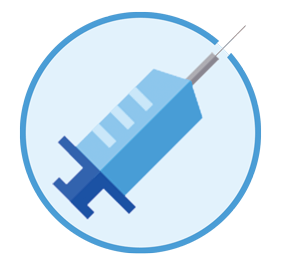Using Electronic Health Record Data to Explore the Challenges of Opioid Prescribing: A Short Communication
Heather R. Walker1*, Heather Mueller1, Tyson Christensen1, Heidi Cozart1, Scott R. Junkins2
1University of Utah Health, Medical Group, Utah, USA
2University of Utah Health, Department of Anesthesiology, Utah, USA
Background: Following the publication of the Center for Diseases Control and Prevention Guidelines for Prescribing Opioids in Primary Care, providers and institutions alike have been modifying practices and policies for prescribing controlled substances (2016).
Study Setting:The University of Utah Health implemented a series of data-driven adaptive and innovative programs and initiatives to improve opioid prescribing across its connected hospital and ambulatory health centers.
Data Collection: Using data mined from the electronic heath record system, researchers have been developing a data-driven approach with a collaborative team spanning clinical and data analytics backgrounds.
Objective: This article discusses those collaborative initiatives and presents a discussion of mindfulness in prescribing practices.
Conclusion: The multi-tiered data-driven approach taken by the University of Utah collaborative team demonstrates a model of change that other health care systems can emulate.
DOI: 10.29245/2768-5365/2021/1.1117 View / Download PdfA Review of the Effectiveness and Safety of Topical Anesthetics in Corneal Abrasions
Stacia B. Shipman*, Kelly A. Painter
Department of Emergency Medicine, INTEGRIS Southwest Medical Center, Oklahoma City, OK, USA
Corneal abrasions are known to be extremely painful and are a commonly seen eye condition. Topical anesthetic drops used for diagnosis of corneal abrasions provide immediate pain relief for most patients, but their use for outpatient use has been controversial. There is lack of consensus regarding ideal management of pain associated with corneal abrasions, with some physicians prescribing nonsteroidal anti-inflammatory drugs or opioids which both can have serious side-effects and/or abuse potential. In recent years, several studies have been conducted to assess the efficacy and safety of short term topical anesthetic use for the treatment of acute corneal abrasions. For this review, four published randomized controlled trials were identified that focused on the effectiveness and safety of various topical analgesics used in treating corneal abrasions. These showed varying degrees of efficacy depending on the outcomes measured without any significant difference in complication rates. Additionally, we reviewed an observational study that investigated whether routinely sending corneal abrasion patients home with a 24-hour supply of topical tetracaine is safe. They found no increased risk of ED revisits, fluorescein uptake at follow up, or ophthalmology clinic referrals. Larger prospective studies are still required to establish definitive safety, but the current available evidence suggests use of topical anesthetics for simple corneal abrasions is efficacious and safe.
DOI: 10.29245/2768-5365/2021/1.1116 View / Download Pdf